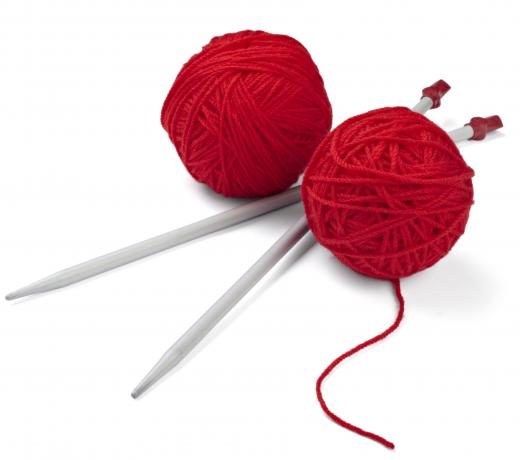Many crochet and knitting patterns can be used to make something wearable or functional, but amigurumi patterns are purely for fun. Amigurumi are little crocheted or knitted dolls or toys. Initially, the amigurumi patterns were only for crocheting, but knitters have been quick to adapt patterns for their own use.
The finished toy or doll can be stuffed with a variety of materials such as fiber, plastic pellets or rice. Some crafters choose their filling carefully because beans and rice may attract unwanted insects. Moreover, depending on the tightness of the crochet or knit, smaller sized fillings may be more apt to fall out.
Usually, the pattern consists of three parts, the body, the appendages and the head. The individual pieces are then sewn together.

The craft of amigurumi originated in Japan and many of the patterns for crocheting in the round are printed pictorially, listing what is to be done per row. Not having a clear pattern can make it a little difficult and confusing at first for crafters used to other types of crochet patterns. Ultimately, however, they can figure it out and sometimes even enjoy the Japanese pictorial amigurumi patterns.

Most often the amigurumi patterns outline how to craft animal shapes, such as a frog, a cat, a teddy bear, a cow or a bunny. Although animals are featured in a majority of the amigurumi patterns, anything is fair game. The craft has expanded so much in recent years that enamored crafters have expanded the basic amigurumi patterns to include a wide range of other things including inanimate objects and people.
Typically, animal or people amigurumi have large heads and short limbs, both being out of proportion to their bodies. The basic structure consists entirely of spirals, and the finished products are rather "roly-poly" in appearance.
There are a few points to keep in mind when working with amigurumi patterns. Amigurumi dolls and toys typically start with a couple of stitches, usually in a technique called the magic ring. From there, as the number of stitches increase in a circular, spiral pattern, the stitches are always worked in single crochet. Single crochet is one of the most basic stitches, which makes amigurumi patterns a good choice for those just learning how to crochet. Almost anyone can crochet amigurumi right from the start.
Many amigurumi patterns may be found in bookstores or via a simple online search.
